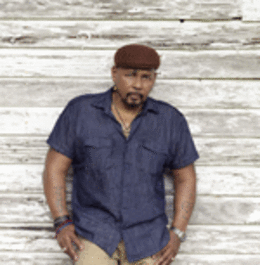
In 1967, Aaron Neville became a household name thanks to his first hit song, “Tell It Like It Is,” which topped Billboard charts for over a month and sold more than a million copies. It was expected to be the beginning of a promising career, including a fresh record deal. Then, the label went bust; Neville never received a dime. However, his unique voice would not be silenced. He went on to reach great success, both with the Neville Brothers and as a solo recording artist. Now, the multiple-Grammy winner is celebrating his 50th year in music with a new album, I Know I’ve Been Changed, in collaboration with fellow New Orleans legend Allen Toussaint. He’s promoting it with a tour that will stop at the Scottish Rite Auditorium in Collingswood on Dec. 18. We caught up with the recently married Neville as he geared up for the record release and his upcoming performance.
SOUTH JERSEY MAGAZINE: So, 50 years in the music business. How does it feel?
AARON NEVILLE: It went by like a flash, I can tell you that. When you are a kid, a day is a long time, a year is a long time.… As you get older, you can see the sun moving. I’m happy to still be doing it. I still have the butterflies [when releasing a new record]. I’m excited about it.
SJM: Was this type of longevity something you always envisioned?
AN: I didn’t look at it like that; I just wanted to sing. I figured everything will always be the same.
SJM: Your distinct voice has undoubtedly inspired countless other singers. Who inspired you?
AN: Brother Joe Mays, The Blind Boys of Alabama … I would go to the movies and see Hank Williams, Gene Autry and Roy Rogers yodeling, so that’s my country roots. And my older brother Art was one of my first inspirations. He turned me on to doo-wop.
SJM: Allen Toussaint produced your first recording session in 1960 and you have reunited with him on this record. I’m sure there were a lot of fond memories.
AN: That was a no brainer. Someone came up with the idea to use him, and I said, ‘You better use him!’ I worked with him early on and we parted ways and got back together in the early ’70s. We co-founded New Orleans Artists Against Hunger and Homelessness in 1985. We’d run across each other on the road, and it’s always a pleasure.
SJM: You took a more traditional approach to New Orleans music with this record by having all the musicians record with you live in the studio. Did you enjoy that creative process?
AN: We recorded at [producer] Joe Henry’s basement studio, and all the musicians live close by. Everybody was there, and we’d just go over stuff until we felt it was right. Everyone that was there was a hard hitter at bat. We did the whole album in five days; it was a labor of love. That makes it real special, everyone there contributing, putting their heart and soul into it, and enjoying it at the same time. It’s like a picnic.
SJM: Growing up in New Orleans, a city with such a rich musical tradition, was it just natural for you and your brothers to be attracted to music?
AN: It definitely is hard not be into music. We grew up in the projects, and my brother Art had a doo-wop group, and they would sit out on the bench singing. They’d run me away until they realized that I could hold a note. [Eventually,] they started letting me sing with them and do the harmonies. Between that and going to the movies and seeing Gene Autry and Roy Rogers yodeling and listening to Nat King Cole and the gospel singers, all that combined … music has always been in me like medicine. It made everything all right.
SJM: I have to ask if you watched HBO’s Treme, and how you felt it portrayed your hometown?
AN: It did a good job; it’s a shame it had to be about what it was.
SJM: You mean, life in New Orleans, post-Katrina. In your eyes, how have things changed during the five years after the storm?
AN: It’s coming back. The people of New Orleans, they are like those blow-up dolls that you knock down and they stand back up. [Katrina] was a heavy blow, some places are not back and will never come back. The people are a special kind. I keep them in my prayers all the time.
SJM: Music helped maintain some sense of normalcy, I would imagine.
AN: The music played a big part in keeping the spirit and the souls together. That was one of the things that attracted you to music as a kid. You will be shooting marbles and you hear a brass band, and you run to hear the music and see the Second Line [in a funeral procession]. The First Line is mourning the dead; the Second Line is drawn to the music. There’s all these different beats in New Orleans, so many types of rhythms. It’s rich.
Published (and copyrighted) in South Jersey Magazine, Volume 7, Issue 9 (December, 2010).
For more info on South Jersey Magazine, click here.
To subscribe to South Jersey Magazine, click here.
To advertise in South Jersey Magazine, click here.












